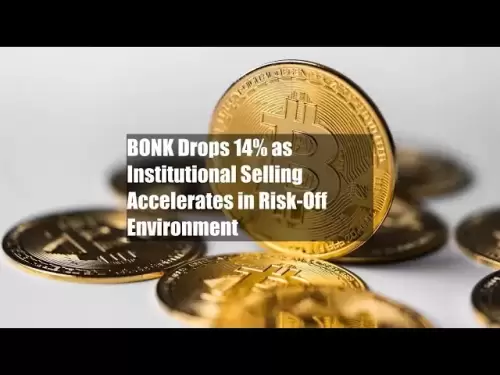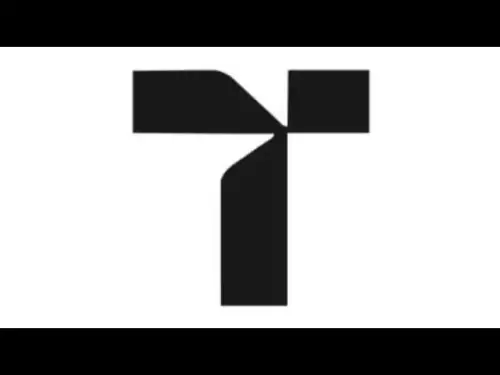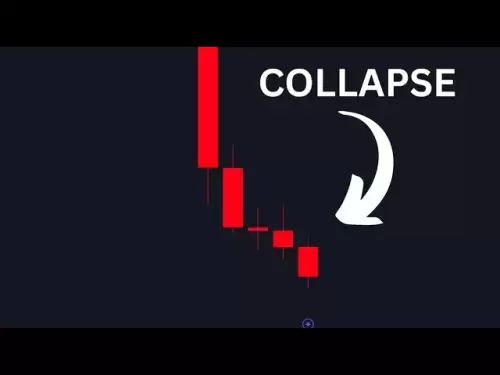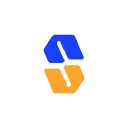-
 Bitcoin
Bitcoin $112400
-1.07% -
 Ethereum
Ethereum $3409
-3.27% -
 XRP
XRP $2.784
-6.60% -
 Tether USDt
Tether USDt $0.9997
-0.03% -
 BNB
BNB $739.3
-2.09% -
 Solana
Solana $158.0
-2.90% -
 USDC
USDC $0.9998
-0.02% -
 TRON
TRON $0.3213
-0.94% -
 Dogecoin
Dogecoin $0.1929
-5.01% -
 Cardano
Cardano $0.6974
-2.82% -
 Hyperliquid
Hyperliquid $36.69
-2.31% -
 Sui
Sui $3.327
-4.80% -
 Stellar
Stellar $0.3672
-5.18% -
 Chainlink
Chainlink $15.65
-3.07% -
 Bitcoin Cash
Bitcoin Cash $525.0
-1.68% -
 Hedera
Hedera $0.2291
-6.00% -
 Avalanche
Avalanche $20.91
-2.96% -
 Ethena USDe
Ethena USDe $1.000
0.00% -
 Toncoin
Toncoin $3.520
-1.12% -
 UNUS SED LEO
UNUS SED LEO $8.968
0.14% -
 Litecoin
Litecoin $105.7
0.26% -
 Shiba Inu
Shiba Inu $0.00001181
-1.79% -
 Polkadot
Polkadot $3.492
-2.08% -
 Uniswap
Uniswap $8.800
-3.10% -
 Dai
Dai $0.9999
-0.01% -
 Monero
Monero $289.9
-3.17% -
 Bitget Token
Bitget Token $4.243
-1.27% -
 Pepe
Pepe $0.00001006
-3.67% -
 Cronos
Cronos $0.1248
-5.68% -
 Aave
Aave $249.7
-2.50%
What is the relationship between Bitcoin and blockchain? Is Bitcoin the only application of blockchain?
Bitcoin, the first blockchain application, enables peer-to-peer transactions, but blockchain's potential extends to Ethereum, supply chains, and more.
Apr 27, 2025 at 12:57 pm
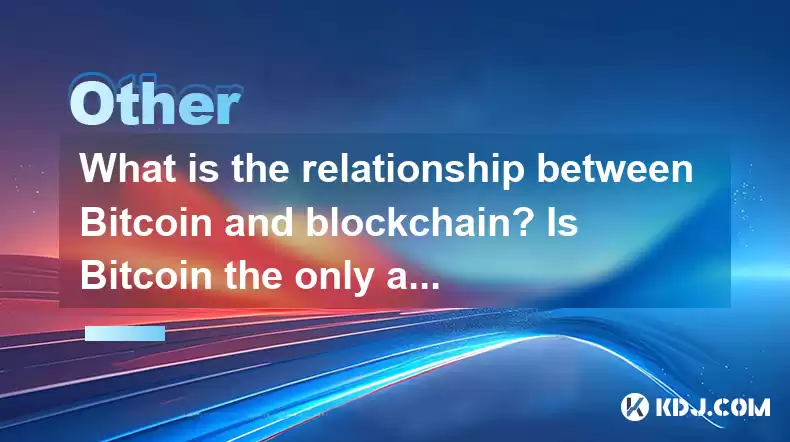
The relationship between Bitcoin and blockchain is fundamental to understanding the evolution and potential of cryptocurrency and distributed ledger technology. Bitcoin is often regarded as the first practical implementation of blockchain technology. To delve deeper into this relationship and explore whether Bitcoin is the only application of blockchain, let's break down the concepts and their interconnections.
Understanding Bitcoin
Bitcoin is a decentralized digital currency that operates without a central authority or banks. It was created in 2009 by an unknown person or group of people using the name Satoshi Nakamoto. The primary purpose of Bitcoin is to enable direct peer-to-peer financial transactions without the need for intermediaries.
The Role of Blockchain in Bitcoin
Blockchain is the underlying technology that makes Bitcoin possible. It is a distributed ledger that records all transactions across a network of computers. Each block in the chain contains multiple transactions, and once a block is added to the chain, it is nearly impossible to alter. This immutability and transparency are what give Bitcoin its security and trustless nature.
In the context of Bitcoin, the blockchain serves as the public ledger where all Bitcoin transactions are recorded. When someone sends Bitcoin to another person, the transaction is broadcast to the network, verified by nodes, and eventually included in a block. Miners compete to solve complex mathematical problems to add new blocks to the blockchain, and in return, they are rewarded with newly minted Bitcoins.
Bitcoin's Use of Blockchain: A Closer Look
To understand how Bitcoin uses blockchain, consider the following key aspects:
- Decentralization: The blockchain is maintained by a network of nodes, ensuring no single entity controls the ledger.
- Security: The cryptographic nature of the blockchain makes it extremely difficult to alter past transactions.
- Transparency: All transactions are visible to anyone on the network, fostering trust among users.
Is Bitcoin the Only Application of Blockchain?
While Bitcoin was the first application of blockchain, it is by no means the only one. The technology's potential has led to the development of various other applications across different industries. Here are some notable examples:
- Ethereum: Launched in 2015, Ethereum introduced the concept of smart contracts, which are self-executing contracts with the terms directly written into code. This allows for more complex applications beyond simple currency transactions.
- Supply Chain Management: Blockchain can be used to create transparent and immutable records of supply chain events, ensuring the authenticity and traceability of goods.
- Identity Verification: Blockchain can provide a secure and decentralized way to manage digital identities, reducing the risk of identity theft and fraud.
- Voting Systems: By leveraging blockchain, voting systems can become more transparent and verifiable, potentially reducing the risk of electoral fraud.
Blockchain Beyond Bitcoin: Real-World Applications
To illustrate how blockchain extends beyond Bitcoin, let's examine a few case studies:
- Walmart's Use of Blockchain: Walmart has implemented blockchain technology to track the origin and journey of food products. This enhances food safety by quickly identifying the source of contaminated products.
- IBM's Food Trust: IBM's Food Trust is another example of blockchain being used in supply chain management. It connects growers, processors, distributors, and retailers to provide end-to-end traceability.
- MediLedger: In the pharmaceutical industry, MediLedger uses blockchain to track the movement of drugs from manufacturer to consumer, ensuring compliance with regulations and reducing the risk of counterfeit drugs entering the supply chain.
Technical Differences Between Bitcoin and Other Blockchain Applications
While Bitcoin's blockchain focuses primarily on financial transactions, other blockchain applications can have different structures and purposes. Here are some key differences:
- Consensus Mechanisms: Bitcoin uses Proof of Work (PoW), while other blockchains might use Proof of Stake (PoS), Delegated Proof of Stake (DPoS), or other consensus mechanisms.
- Smart Contracts: Bitcoin's blockchain does not natively support smart contracts, whereas platforms like Ethereum do.
- Scalability: Bitcoin's blockchain has limitations in terms of transaction speed and volume, leading to the development of other blockchains designed to handle higher throughput.
Exploring the Ecosystem: Altcoins and Their Use of Blockchain
Altcoins, or alternative cryptocurrencies, are another area where blockchain finds diverse applications. Some notable altcoins include:
- Litecoin: Often seen as the silver to Bitcoin's gold, Litecoin uses a different hashing algorithm and aims to provide faster transaction confirmations.
- Ripple (XRP): Ripple uses a blockchain-like technology called the Ripple Protocol consensus algorithm, focusing on enabling fast and low-cost international money transfers.
- Cardano: Cardano aims to provide a more secure and scalable platform for the development of decentralized applications and smart contracts.
The Impact of Blockchain on Traditional Industries
Blockchain's impact extends beyond the cryptocurrency space, influencing traditional industries in various ways:
- Banking and Finance: Blockchain can streamline processes like cross-border payments, trade finance, and KYC (Know Your Customer) compliance.
- Healthcare: Blockchain can improve data security and interoperability, enabling secure sharing of patient records among healthcare providers.
- Real Estate: By tokenizing property assets on a blockchain, real estate transactions can become more transparent and efficient.
How to Get Involved with Blockchain Beyond Bitcoin
If you're interested in exploring blockchain applications beyond Bitcoin, here are some steps you can take:
- Research Platforms: Look into platforms like Ethereum, Hyperledger, and Corda to understand their capabilities and use cases.
- Join Communities: Participate in online forums and communities dedicated to blockchain technology to learn from experts and enthusiasts.
- Develop Skills: Learn programming languages like Solidity (for Ethereum smart contracts) or explore blockchain development courses.
- Experiment with DApps: Try out decentralized applications (DApps) built on various blockchains to see how they work in practice.
Frequently Asked Questions
Q1: How does the security of Bitcoin's blockchain compare to other blockchain applications?
A1: Bitcoin's blockchain uses Proof of Work, which is energy-intensive but provides a high level of security due to its decentralized nature and the difficulty of altering past blocks. Other blockchains, such as those using Proof of Stake, may offer different security trade-offs, potentially being less energy-intensive but relying on the economic incentives of validators to maintain security.
Q2: Can blockchain technology be used for private transactions, or is it always public like Bitcoin?
A2: While Bitcoin's blockchain is public and transparent, other blockchain implementations can be private or permissioned. For example, Hyperledger Fabric allows for private transactions within a consortium of known participants, making it suitable for enterprise use cases where privacy is a concern.
Q3: Are there any regulatory challenges associated with using blockchain for applications other than Bitcoin?
A3: Yes, regulatory challenges vary by jurisdiction and application. For instance, using blockchain for identity verification or voting systems may face different regulatory hurdles compared to financial applications. It's important for developers and businesses to stay informed about the regulatory environment in their target markets.
Q4: How can someone start investing in blockchain projects beyond Bitcoin?
A4: To invest in blockchain projects beyond Bitcoin, start by researching different cryptocurrencies and their underlying technologies. Platforms like Ethereum, Cardano, and others offer various tokens that can be purchased on cryptocurrency exchanges. It's crucial to conduct thorough due diligence, understand the project's whitepaper, and assess the team's credibility before investing.
Disclaimer:info@kdj.com
The information provided is not trading advice. kdj.com does not assume any responsibility for any investments made based on the information provided in this article. Cryptocurrencies are highly volatile and it is highly recommended that you invest with caution after thorough research!
If you believe that the content used on this website infringes your copyright, please contact us immediately (info@kdj.com) and we will delete it promptly.
- Ruvi AI: The AI Token on Cardano Set to Dominate After CMC Listing
- 2025-08-03 04:50:12
- Altcoins in the Spotlight: Cardano, Shiba Inu, and the Quest for Crypto Supremacy
- 2025-08-03 05:30:12
- Litecoin, USDC, and Mining in 2025: A New Yorker's Take
- 2025-08-03 05:50:12
- Bitcoin, MicroStrategy, and Institutional Confidence: A Bullish Trifecta?
- 2025-08-03 04:30:12
- Ruvi AI Token: Price Hike Imminent After Presale Milestone?
- 2025-08-03 04:30:12
- Ruvi AI: The Millionaire Maker with a Price Spike on the Horizon?
- 2025-08-03 02:50:12
Related knowledge

What is the difference between on-chain and off-chain transactions?
Aug 02,2025 at 04:22pm
Understanding On-Chain TransactionsOn-chain transactions refer to digital asset transfers that are recorded directly on a blockchain ledger. These tra...

What is the double-spending problem and how does blockchain prevent it?
Aug 02,2025 at 01:07pm
Understanding the Double-Spending ProblemThe double-spending problem is a fundamental challenge in digital currency systems where the same digital tok...

What is the difference between a blockchain and a database?
Aug 01,2025 at 09:36pm
Understanding the Core Structure of a BlockchainA blockchain is a decentralized digital ledger that records data in a series of immutable blocks linke...
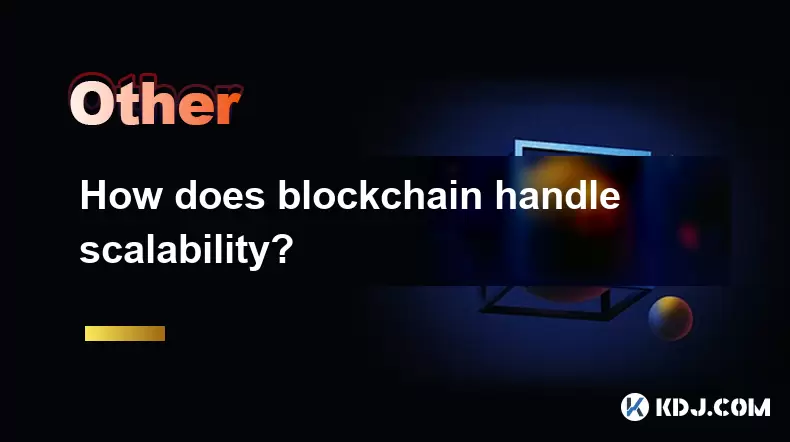
How does blockchain handle scalability?
Aug 02,2025 at 02:58pm
Understanding Blockchain Scalability ChallengesBlockchain scalability refers to a network's ability to handle an increasing volume of transactions wit...
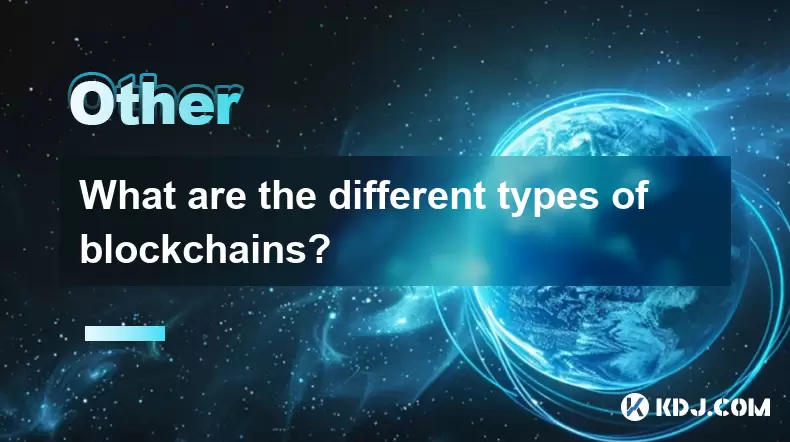
What are the different types of blockchains?
Aug 03,2025 at 03:01am
Public Blockchains: Open and Decentralized NetworksPublic blockchains are the most widely recognized type of blockchain, characterized by their open a...
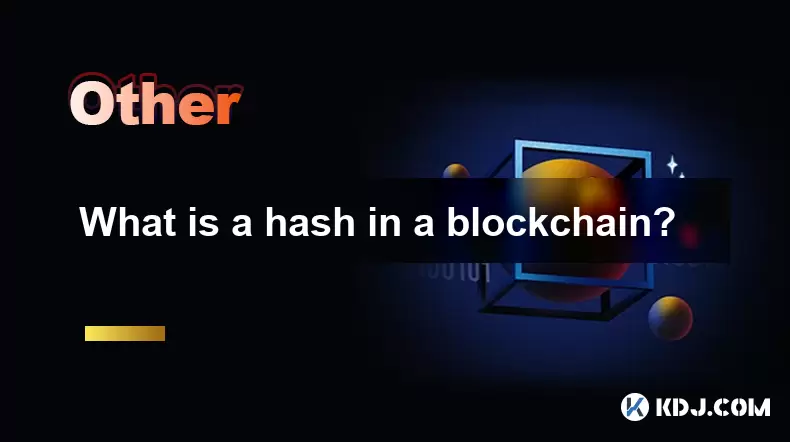
What is a hash in a blockchain?
Aug 02,2025 at 05:28am
Understanding the Concept of Hash in BlockchainA hash in the context of blockchain technology refers to a unique digital fingerprint generated by a cr...

What is the difference between on-chain and off-chain transactions?
Aug 02,2025 at 04:22pm
Understanding On-Chain TransactionsOn-chain transactions refer to digital asset transfers that are recorded directly on a blockchain ledger. These tra...

What is the double-spending problem and how does blockchain prevent it?
Aug 02,2025 at 01:07pm
Understanding the Double-Spending ProblemThe double-spending problem is a fundamental challenge in digital currency systems where the same digital tok...

What is the difference between a blockchain and a database?
Aug 01,2025 at 09:36pm
Understanding the Core Structure of a BlockchainA blockchain is a decentralized digital ledger that records data in a series of immutable blocks linke...

How does blockchain handle scalability?
Aug 02,2025 at 02:58pm
Understanding Blockchain Scalability ChallengesBlockchain scalability refers to a network's ability to handle an increasing volume of transactions wit...

What are the different types of blockchains?
Aug 03,2025 at 03:01am
Public Blockchains: Open and Decentralized NetworksPublic blockchains are the most widely recognized type of blockchain, characterized by their open a...

What is a hash in a blockchain?
Aug 02,2025 at 05:28am
Understanding the Concept of Hash in BlockchainA hash in the context of blockchain technology refers to a unique digital fingerprint generated by a cr...
See all articles





















